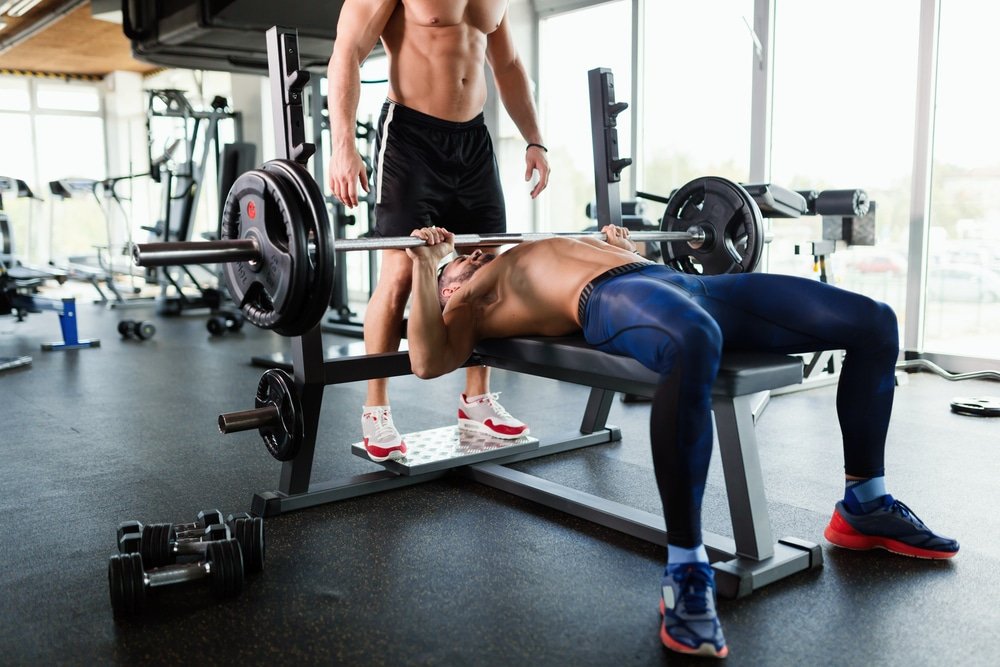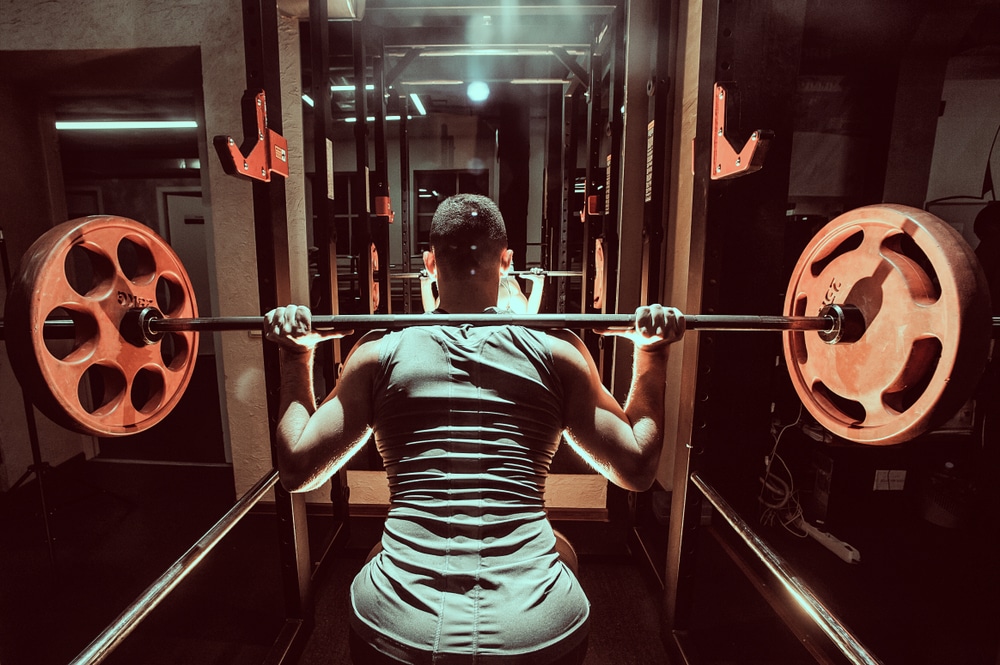
How To Do A Bench Press
It’s the king of the gym. The workout that features in almost any movie involving a prison (or Vin Diesel). The bench press. It’s become so popular over the years, the question ‘how much do you bench?’ is now considered a test of man worldwide – almost as if the answer represents your overall ‘alpha-ness’. But it’s not just a man’s exercise. It’s not the ultimate test of strength. And it’s not the only free-weights workout you should be confident enough to try. Still – it’s one of the best. And despite my own personal tendency to go against the grain, the bench press has always been one of my favourites. That’s mainly because it’s simple. But the benefits of the bench press are the main attraction for most:
- Strengthen and test your upper body
- Add mass to your upper body
- Add depth and shape to your chest
- Tone your arms with defined triceps
- Improve your posture
Here’s the problem … Due to the popularity of the bench press, there are oceans and oceans of guides on technique out there – all crashing and contradicting one another. If you dive in without a clear idea of what you want from the bench press, then you can drown in the information overload. Or worse – you can get caught in the rapids of inconsistent guides and ruin your form altogether, by ‘frankensteining’ different snippets of advice together. So that’s why I want to keep this guide simple for you. I won’t go into any variations on technique. And I won’t go into any of the different types of weights to use. I will be focusing on the best method for me. And the method I’ve seen the most results from: The powerlifting bench press with a weighted bar. Why powerlifting? Because it’s a sport based entirely on a human’s ability to bench press more weight. It doesn’t get better than that. The technique powerlifters use recruits support from all the stabiliser muscles in your shoulders. As a result – you’re less likely to cause long term damage to your rotator cuff. Important notes about the bench press
If you already suffer from any kind of pain or discomfort in your shoulders, then the bench press can be a damaging exercise for you.
It’s also recommended to avoid the bench press if you suffer from back problems, heart problems, breathing problems or weak wrists.
There are other exercises you can do to help you prepare for more intense workouts like this. Consult your physician before getting on the bench. And don’t be afraid to ask a professional trainer for advice on ‘prep’ exercises.
Let’s get started (if you have any questions along the way – let me know in a comment and I’ll get back to you) …
How to bench press
Throughout this step-by-step guide, I’ll be referring to the traditional bench that looks like this:  You can use a bench that comes with a weights rack. But I prefer to use a spotting partner who can monitor my form and help me out if I’m wobbling.
You can use a bench that comes with a weights rack. But I prefer to use a spotting partner who can monitor my form and help me out if I’m wobbling.
- Get in position
Lie down on the bench with your feet planted on the floor – just outside the line of your shoulders and pointing outwards a little. Keep both feet flat during the entire bench press. Keep your neck straight and in-line with your spine – right down the middle of the bench. Set your shoulders so they’re squeezed back and down. And keep them like this throughout the workout. Your back will naturally arc when you lay back on the bench like this. And your chest should push outwards. Tip: The key to making sure it’s a safe arc is to keep your feet flat and your shins vertical in relation to the floor. Note: A lot of people bench press with square shoulders but this technique forces the stabiliser muscles to ‘sit out’ and can cause shoulder injury.  Grab the bar This is where people like to vary their grip to target different muscles. Basically, the narrower your grip on the bar, the more emphasis you place on your triceps and the less emphasis you place on your chest. And vice-versa. But like I said earlier, we’re focusing on the powerlifting method here. And this employs a narrow-to-medium grip. As a guide, you want to grasp your hands around the bar approximately at the points that line up with your shoulders. Keep your elbows tucked into the ribcage and your upper-back tightly packed. Your wrists need to be strong and straight (not bent backwards). You want the bar to be in line with the lower-centre of your chest.
Grab the bar This is where people like to vary their grip to target different muscles. Basically, the narrower your grip on the bar, the more emphasis you place on your triceps and the less emphasis you place on your chest. And vice-versa. But like I said earlier, we’re focusing on the powerlifting method here. And this employs a narrow-to-medium grip. As a guide, you want to grasp your hands around the bar approximately at the points that line up with your shoulders. Keep your elbows tucked into the ribcage and your upper-back tightly packed. Your wrists need to be strong and straight (not bent backwards). You want the bar to be in line with the lower-centre of your chest.
- Lock in your form
So, your shoulder blades are set in position nice and tight. Your wrists and forearms are set to take the weight of the bar. Now it’s time to double check you’ve kept your feet flat and in position. Also, you want to focus your eyes on the ceiling (not the bar). Pick a point directly above you and stare at it as if you’re trying to burn a hole in the ceiling like some sort of Cyclops character.
- Lower the bar to your chest
 Unrack the bar or take it from your spotting partner. Now breathe in and bring your elbows straight down towards the floor, driving them backwards and keeping them tucked close to those ribs. When the bar touches you in the middle of your chest, your chest should remain strong, open and outward (think Superman). Take it slow when you lower the bar (about a second slower than when you press it).
Unrack the bar or take it from your spotting partner. Now breathe in and bring your elbows straight down towards the floor, driving them backwards and keeping them tucked close to those ribs. When the bar touches you in the middle of your chest, your chest should remain strong, open and outward (think Superman). Take it slow when you lower the bar (about a second slower than when you press it).
- Press the bar
Now breathe out and press the bar using the power in your triceps. Don’t soften or flex your tight upper back – keep that locked-in at all times. Keep the elbows closely tucked as you push them past your chest and into the top of the lift.
- Repeat from Step #3
Tips on bench pressing form
- Avoid copying people who put their feet on the bench instead of the floor – it’s too risky and you lose power anyway
- Avoid bouncing the bar down onto your chest – it only dilutes the effectiveness of the rep and you can end up with a cracked rib
- Breathe in on the way down and out on the way up – simple advice that’s often ignored
- If you notice your upper-back isn’t tight like at the beginning of the workout, then restart the set
- Always go slow as you lower the bar – speed-sets are beneficial for certain fitness goals but it’s best to take it slow in general
- Always use your thumbs – a thumbless grip is too dangerous when you’re dealing with a weighted barbell
Some closing advice on bench pressing For best results, you want to bench press using free weights. The Smith machine will give your stabiliser muscles a break and so you’ll only train the major muscles that way (triceps, pecs and shoulders). Other weight machines (including cables) can help reduce the risk of shoulder injury by guiding your arms through their natural movement direction when pressing (the arms arc inwards when pressing with a weight in each hand, rather than a straight bar). But again, the stabiliser muscles are excluded when using a machine, so your overall results can suffer. To stay safe, always use a spotting partner — ideally a professional instructor — at least in the beginning. And like I always say – start slow and light. Yes, heavier weights and fewer reps may help you gain weight … but every powerlifter in the world started out benching light. Besides, you might as well make your mistakes with a lighter bar. Every beginner loses their footing position in the very first few sets – at least master that before you ‘plate up’. One more thing before we finish … If you want incredible posture, overall body strength and a body that looks awesome no matter what – then you cannot just bench press. You need to add some more full-body workouts to get the most from this exercise and to ensure you don’t overwork the benching muscles. Beware of variations. And always try to get the opinion of a professional before attempting any kind of ‘new method’. Thanks for reading. If you’re not done yet, then I’d love to get your thoughts and questions in the comments section below.






No Comments yet!